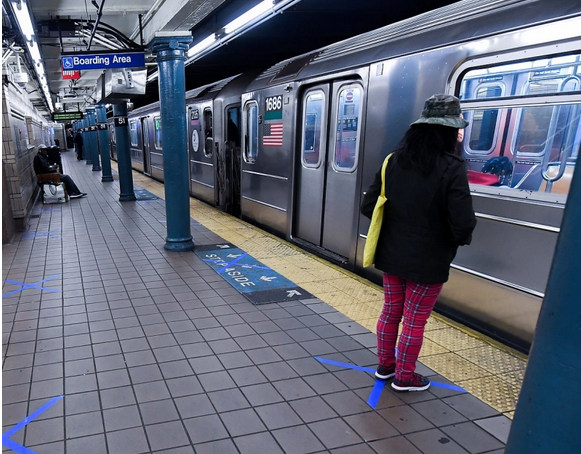Joshua Baum is an urban economist and the Principal of Hilgard Analytics, a mission-driven real estate and economic development research firm founded in 2020
California stands at a crossroads when it comes to public transit. Millions rely on buses, trains, and subways to get to work, school, and essential services. Yet, despite its importance, our transit infrastructure is underfunded, leading to unreliable service, cuts in frequency, and fare hikes that hit working-class communities the hardest.
Senator Jesse Arreguín (D-Berkeley) and Assemblymember Mark Gonzalez (D-Los Angeles) have proposed $2 billion in transit funding over two years to be included in the state budget, closing funding gaps and maintaining essential services to keep transit reliable and affordable for all Californians. Governor Gavin Newsom and the Legislature now have the opportunity to ensure this critical investment is part of the final budget, generating significant economic and social returns, particularly for Los Angeles.
The Economic Case for Transit Investment
A well-funded transit system is not just a convenience, it is an economic engine. In Los Angeles County, Metro provides nearly a million rides per day. Each trip represents economic activity: workers getting to jobs, students reaching schools and consumers visiting businesses.
When transit is unreliable or unaffordable, businesses lose customers, and workers face employment instability.
Investing in transit creates jobs. A study from the American Public Transportation Association found that every $1 billion invested in public transit generates about 50,000 jobs. These include long-term positions in operations, maintenance, and administration. Los Angeles, with its ambitious Metro expansion, including the Purple (D Line) subway extension and the Sepulveda Transit Corridor, stands to benefit immensely. It will provide stable, well-paying jobs at a time of economic uncertainty.
Transit investment also boosts local economies. Businesses near public transit see increased foot traffic and higher sales. In a car-dependent city like Los Angeles, expanded transit improves access to jobs and housing. To keep our economy thriving, we must invest in the infrastructure that supports it. Studies show that every dollar spent on transit generates multiple dollars in local economic activity, proving that public transportation is an essential driver of
economic growth.
Addressing Equity and Social Mobility
Public transit is a lifeline for California’s most vulnerable residents. Low-income workers, seniors, students, and people with disabilities rely on it for daily needs. When service is cut or fares rise, these communities suffer the most. In Los Angeles County, where nearly 75% of Metro riders are people of color and the majority are from low-income households, disinvestment worsens inequalities.
Reliable, affordable transit connects people to better-paying jobs, education, and healthcare.
Without it, those who cannot afford a car or who are unable to drive face major barriers. When transit is well-funded, it becomes a tool for opportunity rather than an obstacle.
Underfunded systems also struggle with maintenance, leading to deteriorating infrastructure, unreliable service, and security concerns. More funding means better service, improved station lighting and enhanced security, which together make transit safer and more attractive.
Additionally, modernizing public transit fleets with newer, cleaner vehicles improves efficiency and makes transit a more appealing alternative to driving.
The Environmental and Public Health Benefits
Los Angeles has long struggled with air pollution and traffic congestion. Transportation accounts for nearly 40% of California’s greenhouse gas emissions, making it the largest contributor to climate change. Expanding and improving transit is one of the most effective ways to reduce emissions. When people have access to fast, reliable, and affordable transit, they drive less, leading to cleaner air and less congestion.
A strong transit system improves public health. Studies show that cities with higher transit ridership experience fewer traffic fatalities and better overall health outcomes. Fewer cars on the road mean lower emissions, which leads to cleaner air and a reduced incidence of respiratory and heart-related illnesses. Investing in transit enhances mobility while making streets safer by reducing congestion and accidents.
A Choice for Our Future
The decision before California lawmakers isn’t just about a budget line item, it is about shaping the state’s future. Do we want a California where only those who can afford cars have access to opportunity, or one that prioritizes equity, sustainability, and economic growth for all?
For Los Angeles, this is an urgent issue. The city is pushing to expand transit ahead of the 2028 Olympics, but without adequate state funding, many projects could stall. At a time when Angelenos are demanding better service, safer streets and cleaner air, we cannot afford to turn our backs on transit investment.
Governor Gavin Newsom and the Legislature have a clear choice. By including $2 billion in transit funding in the budget, they can create jobs, reduce inequality, fight climate change, and strengthen the economy. This is not just a cost, it is an investment in a more prosperous and sustainable future for all Californians.
Now is the time to act. Lawmakers must fund the transit systems millions rely on. Our economy, our communities, and our planet depend on it.






